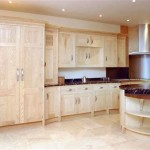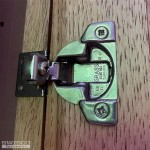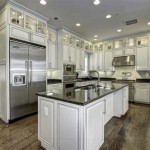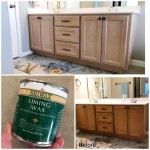How To Repaint Melamine Kitchen Cabinets
Melamine kitchen cabinets offer a budget-friendly and durable option for homeowners. However, over time, the finish can become dull, chipped, or simply outdated. Repainting offers a cost-effective way to revitalize these cabinets and update the kitchen's aesthetic. This process requires meticulous preparation and the right materials to ensure a smooth, professional-looking finish that stands up to daily use.
1. Preparing the Melamine Surface
Proper preparation is crucial for successful adhesion of the new paint. Melamine surfaces, due to their smooth, non-porous nature, can present challenges for paint adherence. Thorough cleaning is the first step. Use a degreasing cleaner specifically designed for kitchen use, ensuring all grease, grime, and residue are removed. Rinse thoroughly with clean water and allow the cabinets to dry completely.
After cleaning, lightly sanding the surface is essential to create a slightly rough texture for the primer and paint to grip. Use fine-grit sandpaper (220-grit) and apply even pressure, avoiding excessive sanding, which could damage the melamine. Following sanding, wipe down the surfaces with a tack cloth to remove any dust particles.
Masking adjacent areas, such as countertops, walls, and appliances, is the final step in preparation. Use painter's tape to create clean lines and prevent accidental paint transfer. Covering the floor with drop cloths will protect it from spills and drips.
2. Priming for Adhesion
Applying a high-quality bonding primer specifically designed for slick surfaces like melamine is crucial. This primer creates a base that allows the paint to adhere properly. Avoid using standard primers, which may not provide adequate adhesion. Apply a thin, even coat of primer using a brush, roller, or sprayer. Allow the primer to dry completely according to the manufacturer's instructions before proceeding to the next step.
Choosing the right primer can significantly impact the final result. Oil-based primers offer excellent adhesion and durability, but have a longer drying time and stronger odor. Water-based primers dry faster and have less odor, making them a more convenient option. Consider the specific project requirements and personal preferences when selecting a primer.
3. Painting the Cabinets
Once the primer is dry, the cabinets are ready for painting. High-quality acrylic or latex paints designed for kitchen and bathroom use are recommended due to their durability and resistance to moisture and scrubbing. Select a paint finish that suits the desired aesthetic. Semi-gloss and satin finishes are popular choices for kitchen cabinets as they are easy to clean and offer a subtle sheen.
Apply the paint in thin, even coats using a brush, roller, or sprayer. Multiple thin coats provide a smoother and more durable finish than one thick coat. Allow each coat to dry completely according to the manufacturer's instructions before applying the next coat. Lightly sand between coats with fine-grit sandpaper to ensure a smooth finish.
Brush selection also plays a role in achieving a professional finish. High-quality synthetic bristle brushes specifically designed for acrylic or latex paints are recommended. Rollers with a smooth finish are ideal for larger, flat surfaces. If using a sprayer, ensure proper ventilation and follow safety precautions.
4. Finishing and Curing
After the final coat of paint has dried, carefully remove the painter's tape. Slowly peel the tape away at a 45-degree angle to prevent lifting the paint. Inspect the finished surface for any imperfections or areas that require touch-ups. If necessary, apply touch-up paint using a small brush and allow it to dry completely.
Allowing adequate curing time is essential for the paint to reach its maximum hardness and durability. Avoid heavy use or cleaning of the cabinets for the recommended curing period specified by the paint manufacturer. This typically ranges from several days to a few weeks, depending on the type of paint used.
Proper ventilation during the entire repainting process is important, especially when using oil-based primers or paints. Open windows and use fans to circulate fresh air and minimize exposure to fumes. Following these steps and using the appropriate materials will provide a durable and attractive finish that will last for years to come.

5 Tips For Painting Melamine Cabinets Real Milk Paint Co

Painting Melamine Kitchen Cabinets The Decorologist

How To Paint Melamine Cabinets My Uncommon Slice Of Suburbia

Painting Melamine Or Laminate Cabinets Without A Paint Sprayer

Painting Melamine Cabinets Home Painters Toronto

Painting Melamine Or Laminate Cabinets Without A Paint Sprayer

Beginner S Guide To Kitchen Cabinet Painting

How To Paint Melamine Centris Ca

How To Paint Laminate Cabinets Kitchen Makeover Painting

Can You Paint Melamine Yes Here S How The Handyman Daughter
Related Posts








